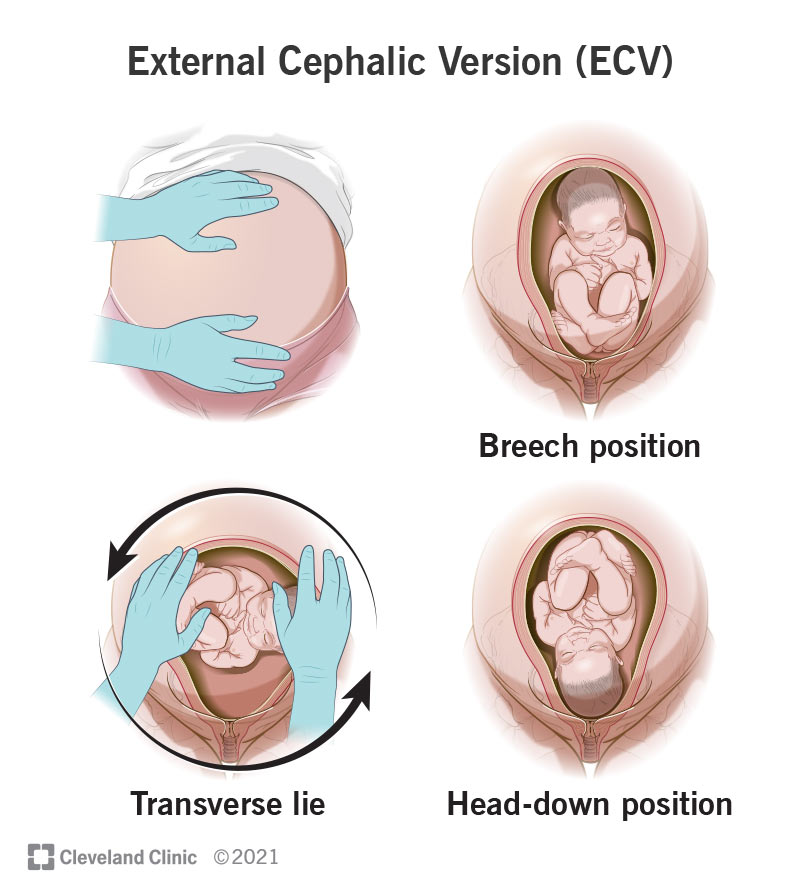Breech Baby: Understanding the Causes, Risks, and Delivery Options
Introduction
A breech baby is a baby who is positioned in the womb with their feet or buttocks down instead of their head. This position can make delivery more challenging and may increase the risk of complications. In this article, we will explore the causes, risks, and delivery options for breech babies.
Causes of Breech Presentation
The exact cause of breech presentation is often unknown, but several factors may increase the risk:
- Uterine abnormalities: Conditions such as a bicornuate uterus or a septate uterus can create an irregular shape that makes it difficult for the baby to turn head down.
- Placenta previa: When the placenta covers the cervix, it can block the baby’s head from engaging in the pelvis.
- Multiple pregnancies: Twins or triplets are more likely to be breech due to space constraints in the womb.
- Premature birth: Babies born before 37 weeks are more likely to be breech because they have not had enough time to turn head down.
- Oligohydramnios: A low level of amniotic fluid can restrict the baby’s movement and make it difficult to turn.
Risks of Breech Presentation
Breech presentation can increase the risk of certain complications during delivery, including:
- Cord prolapse: The umbilical cord can slip out of the cervix before the baby is born, cutting off the baby’s oxygen supply.
- Uterine rupture: The uterus can tear during labor if the baby is not positioned correctly.
- Premature birth: Breech babies are more likely to be born prematurely, which can lead to health problems.
- Low birth weight: Breech babies may have difficulty gaining weight in the womb due to their position.
- Cesarean section: Breech babies often require a cesarean section (C-section) to ensure a safe delivery.
Delivery Options for Breech Babies
The delivery options for breech babies depend on several factors, including the baby’s gestational age, size, and position.
Vaginal Delivery
In some cases, a vaginal delivery may be possible for breech babies. This is more likely if the baby is small, the mother’s pelvis is large, and the baby is in a frank breech position (feet down). However, vaginal delivery for breech babies carries a higher risk of complications than head-first delivery.
External Cephalic Version (ECV)
ECV is a procedure in which the doctor attempts to manually turn the baby head down from the outside of the mother’s abdomen. This procedure is usually performed between 36 and 38 weeks of pregnancy. ECV is successful in about 50% of cases.
Cesarean Section
A cesarean section is the most common delivery method for breech babies. This procedure involves making an incision in the mother’s abdomen and uterus to deliver the baby. C-sections are generally safe and effective, but they carry a higher risk of complications than vaginal delivery.
Choosing the Best Delivery Option
The best delivery option for a breech baby will depend on the individual circumstances. The doctor will consider the risks and benefits of each option and make a recommendation based on what is safest for the mother and baby.
Conclusion
Breech presentation is a condition that can increase the risk of complications during delivery. However, with proper prenatal care and planning, most breech babies can be delivered safely. If you are pregnant with a breech baby, it is important to discuss the delivery options with your doctor to determine the best course of action.

